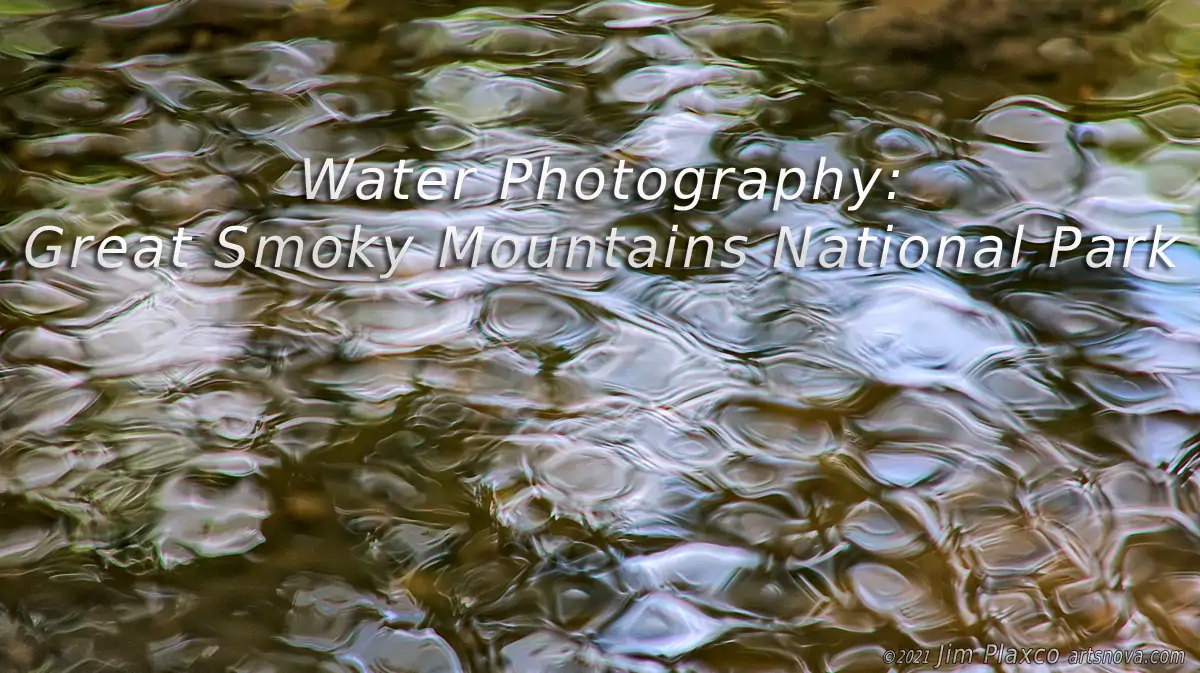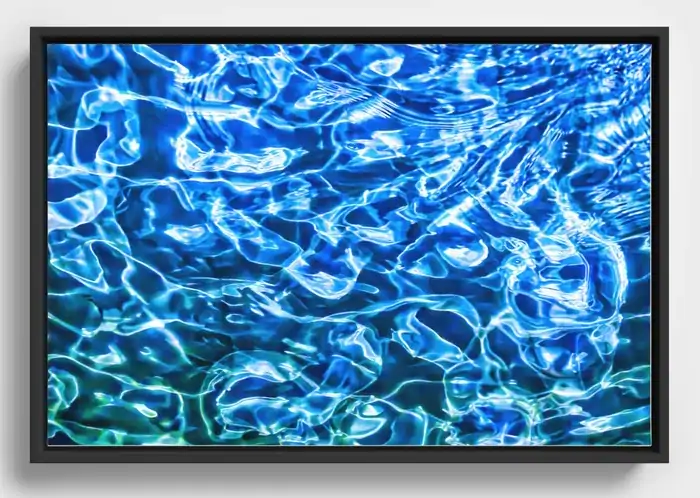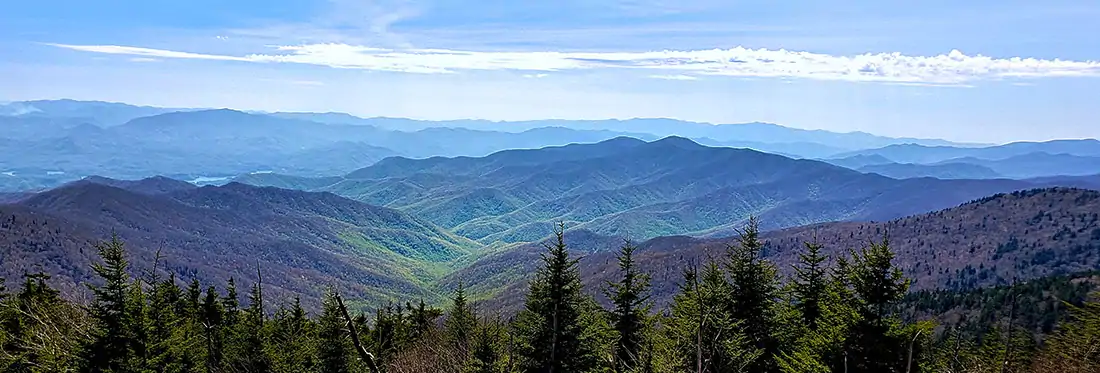Water Photography: Great Smoky Mountains National Park Book

In 2019 my wife and I visited Great Smoky Mountains National Park and had a wonderful time hiking the park's trails. One factor in our decision to spend a week at this national park, besides from hiking in mountains, was the numerous streams and waterfalls. Fortunately for us there had been a fair amount of rainfall the week before our visit so the many streams, creeks, and waterfalls had very good water flow.
A long fascination with the visual characteristics of water and its abstract nature led me to concentrate my photographic attentions on the park's water features. In all I took a few hundred photographs of water. In fact most of the photographs that I took were of water features. While I took a number of photos of waterfalls, they all struck me as being rather ordinary. At this time I am not sure if I will include any photographs of waterfalls in the book, even though they were the final destination on a number of our hikes.

Probably the single most productive and enjoyable hike was the trail to Chimney Tops, and the Road Prong creek. While I took photographs of water whereever I found it, even if just puddles, Road Prong creek was the subject of more of my photographs than any other water feature, though there were some that came close, like Walker Camp Prong and West Prong Little Pigeon River.
My photographic interest in water is primarily with presenting water features as works of abstract photography. I am most drawn to those photographs that are not immediately obvious as being photographs of water. One such example is that shown in Figure 1. The chaotic interplay of light, wind, and current all combine to form an everchanging natural painting.
Most of the photographs taken on this trip were taken using my Nikon 35mm SLR. I also took a number of photos using my Samsung Galaxy S9 phone camera and the Open Camera android app. I have not decided on whether or not I'll include any of the photographs taken using my smartphone in the book.
In terms of image processing, I rely heavily on Rawtherapee which is my Camera Raw processing software of choice. Not only is the sofware open source, it also has an excellent user community. The other software I use, but to a lesser extent, is G'MIC. I also may on occassion use Darktable, GIMP, and Adobe Photoshop as part of my image processing workflow.

The image in Figure 3 (above) is one example of my aesthetic tastes when it comes to photographs of water. And no, this photograph was not taken at the Smoky Mountains. However, if you look at figures 1 and 3 you will observe certain similarities. Clicking the link for figure 3 will take you to the photograph's product page on the Society6 website, where it is available as an open edition print.
Book Status

As of this writing (Nov. 2021) I am not actively working on this book. I have processed a number of the photographs but those have been largely tests of my image processing workflow. Once I have processed a sufficiently large number of the photos that I took, I will begin the process of assembling and organizing them in order to create a visual flow for the book.